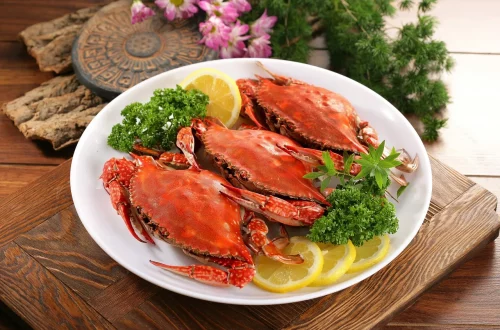
Comprehensive Chicken Age Chart with Pictures for Every Stage
Raising chickens can be an incredibly rewarding endeavor, whether for eggs, meat, or companionship. Understanding the developmental stages of chickens is crucial for optimal care, ensuring they thrive throughout their lives. From hatchlings peeping in their brooder to mature hens laying eggs, each stage presents unique needs and characteristics.
As you embark on your chicken-raising journey, you will encounter various phases in your flock’s life. Each stage not only requires different nutritional needs but also specific environmental conditions to promote healthy growth. Observing these changes can deepen your appreciation for these remarkable birds and enhance your ability to care for them.
This guide will explore the intricacies of chicken development, providing insights into their growth stages, behaviors, and care requirements. By familiarizing yourself with the life cycle of chickens, you will be better equipped to make informed decisions that will positively impact their health and productivity. Let’s delve into the fascinating world of chickens and discover what each stage entails.
Understanding Chick Development: From Hatchling to Chick
The journey of a chicken begins at the very moment it hatches from its egg. The initial stage, known as the hatchling phase, lasts about four weeks. During this period, chicks are highly vulnerable and require specific care to ensure their survival and growth.
Hatchlings are characterized by their soft down feathers and a strong instinct to huddle together for warmth. They rely on their mother or a heat source to maintain a stable temperature, as they cannot regulate their body heat effectively at this stage. A brooder is an ideal environment for these young chicks, providing the warmth they need and a safe space to explore.
Nutritionally, hatchlings require a starter feed rich in proteins and essential nutrients. It’s crucial to provide clean water at all times, as hydration is vital for their development. During this stage, you will notice rapid growth; chicks can gain about 0.5 to 1 pound each week, depending on the breed.
Socialization is another critical aspect of this early stage. Chicks learn vital social skills from interacting with each other. If they are raised in isolation, they may develop behavioral issues later in life. Providing a mixed group of chicks can help them learn pecking order and other social behaviors essential for their interactions as adult chickens.
As the chicks approach the four-week mark, they will begin to develop feathers, transitioning from the hatchling stage to the chick stage. This feathering process is a critical turning point, as their ability to regulate body temperature improves, allowing them to thrive in slightly cooler environments.
The Growing Chick: Key Characteristics and Care
Once chicks have transitioned out of the hatchling phase, they enter the growing chick stage, which lasts from four weeks until approximately eight weeks old. This stage is marked by significant physical and behavioral changes.
Growing chicks become more active and curious, exploring their surroundings with increased confidence. Their feathers continue to develop, providing better insulation and protection. At this point, it’s essential to adjust their diet to a grower feed that supports their increasing energy levels and growth requirements. This feed typically contains a balanced mix of proteins, vitamins, and minerals to promote healthy muscle development and overall health.
During this phase, social dynamics become even more pronounced. Chicks will start to establish their pecking order, a social hierarchy that will continue into adulthood. Observing these interactions can be fascinating; you may notice some chicks asserting dominance while others take on more submissive roles.
Providing ample space for movement and exploration is vital at this stage. A cramped environment can lead to stress and aggression among the flock. Ensuring they have enough room to roam, perch, and scratch will promote healthy behaviors and reduce the likelihood of feather pecking or bullying.
As they approach the eight-week mark, you may begin to notice early signs of gender differentiation. Males may start to develop larger combs and wattles, while females will generally remain smaller and less conspicuous. However, the best way to determine gender is often after several more weeks of growth.
Transitioning to Adolescence: The Pullet and Cockerel Stage
The transition into adolescence begins around eight weeks and lasts until about twenty weeks of age. During this time, chicks morph into pullets (females) and cockerels (males). This is a crucial developmental stage where physical characteristics become more pronounced, and behavioral changes occur.
Adolescent chickens are typically more independent than younger chicks. They will start to explore further from their shelter, seeking out food and water on their own. It’s essential to provide a balanced diet during this stage to support their rapid growth. As they approach maturity, pullets will require additional calcium to prepare for egg-laying, while cockerels may benefit from a diet that supports muscle development for meat production.
Social behavior becomes increasingly complex during adolescence. Cockerels will often begin to display mating behaviors, which can lead to territorial disputes among males. If you are raising mixed flocks, providing separate spaces for males can help mitigate potential conflicts.
Around this time, pullets will start to develop their combs and wattles further. You may also notice changes in their vocalizations, with males beginning to crow. It’s important to monitor their interactions, as adolescent chickens can be prone to bullying, especially if there is a significant size or age difference among them.
Maintaining a stress-free environment is crucial during this stage. A calm flock will result in healthier birds, reducing the likelihood of aggression and illness as they mature.
Reaching Maturity: The Adult Stage of Chickens
The final stage of a chicken’s life cycle encompasses adulthood, beginning around twenty weeks of age. At this point, chickens reach their full size and sexual maturity, with pullets often starting to lay eggs around this time.
Adult chickens have distinct roles depending on their gender. Hens are focused on laying eggs and nurturing their offspring, while roosters often take on protective roles within the flock. Adult chickens require a balanced diet that includes layer feed for hens, which is higher in calcium to support egg production, and appropriate nutrition for roosters to maintain health and vigor.
Social behaviors in adult chickens tend to stabilize as they establish their roles within the flock. They will continue to interact with one another, establishing a pecking order that can shift but generally remains consistent over time. It’s vital to provide ample space and resources to reduce competition and stress, which can lead to aggressive behaviors.
Additionally, adult chickens require regular health checks and vaccinations to prevent disease. Keeping their coop clean and ensuring they have access to fresh air and sunlight will promote their overall health.
Maintaining a healthy and productive flock involves understanding their needs at this stage, from proper nutrition to social dynamics. Providing a nurturing environment will ensure that both hens and roosters thrive, contributing positively to your chicken-raising experience.
In conclusion, understanding the various stages of chicken development is essential for any poultry enthusiast. By catering to their specific needs at each life phase, you can ensure your flock remains healthy, happy, and productive.
*Disclaimer: This article is for informational purposes only and should not be considered medical advice. For health concerns regarding your chickens, please consult a veterinarian.*




